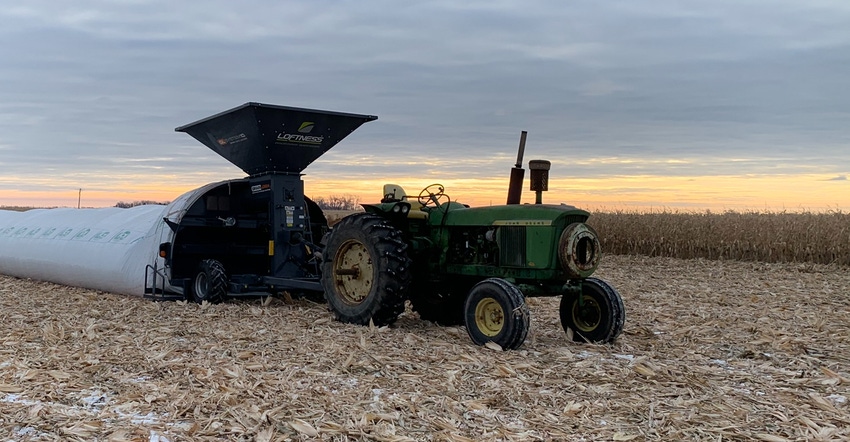
With increased material costs and some producers still looking for storage on their farm, grain bags could be the affordable answer.
Zane Erickson, president of North Star Ag in Tower City, N.D., explains the benefits of using grain bags. “Grain bags are great for short-term storage or as additional storage on the farm,” he says.
Grain bags can also help producers maintain a high harvest efficiency. “They’re great for if you’re short help or short trucks, you can use these right in the field to improve combining efficiency,” he says.
These grain bags also offer both mobility and financial flexibility to producers. Financially, producers can increase their bag storage more easily than working within the confines of metal bins. Mobility-wise, producers can bag any time, any place for those harvesting in multiple fields. While grain bins stand in one location only, grain bags can be brought wherever it’s convenient. “You know, we’re out combining, bag the corn right in the field, then continue on with the field,” Erickson says.
Quality assistance
Another benefit to using grain bags, Erickson says, is the improvement on storage quality. “You know you’re pushing grain in and pushing air out. The bags are essentially vacuum-sealed, so it’s an anerobic environment for that grain,” he says, adding that “99% of the time you aren’t going to have anything affect the integrity with proper management.”
While bagging is a storage option for all grains, non-oil seed grains store best. “Corn and wheat work the best. Sunflowers and soybeans can be bagged, but with the oil content, they really have to be managed to ensure quality,” Erickson says.
Getting started
Erickson says while bags can be a solution for many producers, the fear of the unknown can deter some from taking the leap into alternative storage.
“Typically we walk through what to expect and talk about what won’t happen with new producers,” he says. “We also do on-farm setups, so we’ll deliver the system, get it unloaded and set up, then start the grain bagging along with the producer.”
Their team stays for three to four grain cart loads to ensure the process is working smoothly for the growers. “By the end of the half-day we stay with them, they’re able to understand the process, and know what to expect or what could go wrong,” Erickson says.
He says producers can be confident when using grain bags as an option for storage on their farm, especially knowing the extent of use in the region. “You know we’ve probably put nearly a million bushels through grain bags on our farm,” he says. “I’d rather store high-moisture grain in a bag than a bin just because of how well that grain stores in a bag than a bin.”
For more information on how to start grain bag storage on your operation, check out North Star Ag.
Read more about:
Grain StorageAbout the Author(s)
You May Also Like






